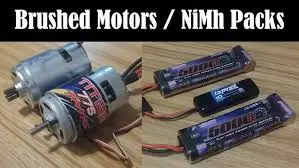What does an ideal Battery Energy Storage Site (B…
April 14, 2018

The world of remote-controlled vehicles, hobbyist projects, and various electronics applications often involves navigating the complex landscape of batteries and motors. One common question is whether you can run a LiPo (Lithium Polymer) battery on a brushed motor.
A brushed motor can bepowered by a LiPo(Lithium Polymer) battery. Make sure the voltage of the LiPo battery is the same as what the motor requires, and take temperature, capacity, and current draw into account. For maximum performance and safety, a proper setup is essential, which includes an Electronic Speed Controller (ESC) compatible with both components.
This thorough guide will go into great detail about brushed motors, LiPo batteries, and compatibility variables that affect how well they work together.
Knowledge of Lithium-Polymer Batteries
Because of their high energy density, lightweight construction, and reliable power delivery, LiPo batteries have become incredibly popular. They're commonly used in anything from drones and remote-controlled cars to portable electronics. Multiple cells make up LiPo batteries, and each cell has a nominal voltage of 3.7 volts. Configurations such as 2S (2 cells), 3S (3 cells), etc. are standard.
Unpacking Brushed Motors:
Traditional electric motors called brushed motors regulate the flow of power using a commutator and brushes. Although brushless motors have mostly taken their place in many applications, brushed motors are still widely used in some devices because of their affordability and ease of use. They are frequently found in boats, RC cars, and industrial equipment and run on direct current (DC).
Compatibility Considerations
1. Voltage Compatibility
A higher voltage battery connected to an engine intended for a lower voltage will cause the engine to run too fast and may even break the motor. The voltage rating of the LiPo battery should match the voltage requirements of the brushed motor.
2. Current Draw (Amperage)
Brushed motors have specific amperage requirements. Ensuring the LiPo battery can supply the necessary current without exceeding the motor's limits is crucial. Using a battery with insufficient current capabilities can lead to performance issues and overheating.
3. Capacity (mAh)
Choosing a LiPo battery with the right capacity will guarantee that the brushed motor has enough runtime. LiPo batteries are available in a range of capacities, which are expressed in milliampere-hours (mAh).
4. C Rating
When choosing a battery for a high current application, such as powering brushed motors, it is important to make sure the C rating is sufficient to suit the motor's needs. A LiPo battery's discharge capability is indicated by its C rating.
5. Size and Weight
LiPo batteries vary in size and weight, and the chosen battery should fit the available space in the device and align with weight restrictions. It's essential to balance power requirements with practical considerations.
6. Motor Controller (ESC)
An Electronic Speed Controller (ESC) is frequently needed for brushed motors in order to control the current flow. Make sure the LiPo battery and the brushed motor are compatible with the ESC.
Safety Considerations
Overcharging and discharging
LiPo batteries should not be overcharged or over discharged as this can shorten their lifespan, cause performance issues, and pose a safety risk. Make use of a dependable LiPo battery charger with integrated safety measures.
Temperature Management
While the brushed motor and LiPo battery are operating, keep an eye on their respective temperatures. Overheating might be a sign of possible problems and needs to be quickly resolved.
Secure Wiring
In order to avoid short circuits, which could harm the battery and motor, make sure that all electrical connections are tight and well-insulated.
Follow Manufacturer Guidelines
Follow the instructions supplied by the LiPo battery, brushed motor, and ESC manufacturers. This covers suggestions for voltage ranges, current limitations, and any particular compatibility needs.
Follow the instructions supplied by the LiPo battery, brushed motor, and ESC manufacturers. This covers suggestions for voltage ranges, current limitations, and any particular compatibility needs.
Troubleshooting Common Issues
1. Motor Stalling or Jerky Movement
This could be a sign of insufficient current flow. Verify that the LiPo battery can supply the required amount of current for the motor.
2. Overheating
Mismatched components or high current draw can cause overheating. Make that the motor, ESC, and LiPo battery are all compatible and operate within the given parameters.
3. Reduced Runtime
Consider switching to a LiPo battery with a larger capacity if the runtime is less than anticipated in order to meet the brushed motor's energy requirements.
4. Inconsistent Performance
Incompatible components or bad connections might cause inconsistencies. Check the wiring two times over to make sure all the parts fit together.
How can I keep my LiPo batteries from overheating when I use them with brushed motors?
Conclusion
It is possible to run a LiPo battery on a brushed motor provided that voltage, current, capacity, and other compatibility variables are carefully taken into account. Through comprehension of the specs of the brushed motor and LiPo battery, as well as a methodical approach to testing and setup, enthusiasts and hobbyists can unleash the full potential of this power combination for an array of uses. For brushed motor-driven devices, remember to put safety first, follow manufacturer instructions, and take advantage of the increased performance and efficiency that LiPo batteries provide.
Comments
Write a comment